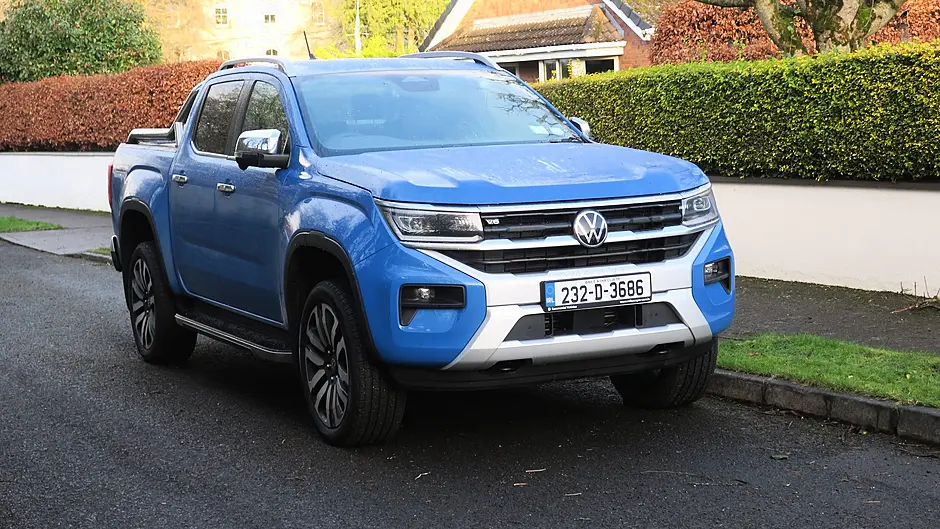BY BRIAN BYRNE
WITH something in the region of 1% of light vehicles sold in Ireland being pick-ups, it’s not a massive market here, especially when compared to the light truck sales ratio in the US, or in south-east Asia.
But there’s business to be done, and key carmakers have offerings for Irish buyers. Across Europe, Ford Ranger, Toyota Hilux, and Nissan Navara have long been the main sellers.
The Volkswagen Amarok, sold in its first generation between 2010 and 2020, had a good following in Germany, but in most EU countries including Ireland was well down the lists compared to the big three pick-up purveyors.

So when it came to generation 2 Amarok, always-pragmatic VW turned to Ford, with whom they have a joint product agreement since 2020.
The new Amarok is built by Ford, using the latest Ranger platform and engines, but with the German maker’s own take on style and details, like suspension and steering settings.
The exterior design has the overall dimensions of the Ford but with almost all metalwork pressed to VW’s detail. Notably the front end is less intimidating and offers some better visibility for drivers, thanks to a lower slope on the bonnet. There’s no mistaking the brand, the big VW badge high and proud.
The wheel arches are squared off, and the rear end sports a familiar shaping of lights from the Wolfsburg design people. At almost 5.4 metres, it’s a big car. Compared to the first generation, the new Amarok is longer and has a substantially longer wheelbase, offering real space for three adults in the back of the double cab.
A true rough terrain vehicle, this latest one can travel through water almost twice as deep as the previous 500mm wade depth. For cargo, if you roll back the electric cover there’s width for a Euro pallet of stuff up to 400kg in weight. Inside the latest Amarok there’s a strong sense of VW’s style from any of their SUVs, so loyalists to the brand will feel very much at home.
The large central screen is Ford with VW tweaking and switching of some controls, such as the climate in the Amarok being managed through the screen rather than the knobs this writer is well known to prefer.

The seats and the tall car mean riding high. On the open road, that’s handy, though in some city driving the sheer size of the car had me being ultra careful about how I placed it in traffic. Lots of sensors and cameras were a real help.
A very immediate, and rather surprising impression was the comfort of this car on the road. I understand that this was one of VW’s priorities in the set-up of their vehicle, and it is way ahead in this respect of pick-ups I’d have driven only a decade ago. It is helped by a high level of soundproofing, and there was no sense of there being a big lump of diesel up front.
For those who need to go off-road, the digitised switching between high and low ratios, and all-wheel-drive options, is absolutely simple to operate. The engine in my review Amarok was the 3.0 V6 diesel, which comes with a 10-speed automatic that was pretty smooth in the context of a diesel motor, and also helped with keeping noise levels down while travelling.
The transmission also aided in keeping the fuel consumption to a manageable average of 9.6L/100km. That’s thirsty by car standards, but decent in this vehicle’s context, especially when you consider the 258hp of power up front.
My driving needs wouldn’t have me in a pick-up permanently.
But for anyone whose work does require this kind of vehicle, such as construction and engineering professionals, or landscapers and similar, and who appreciate a level of confidence that a VW badge might give them, there’s a space for Amarok in the gallops.
I’ll be interested to see how this new one fares amongst the current heavyweights.










